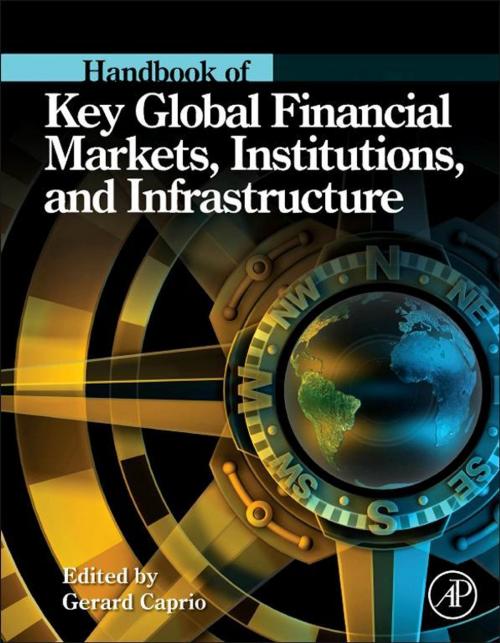Handbook of Key Global Financial Markets, Institutions, and Infrastructure
Business & Finance, Finance & Investing, Banks & Banking, Investments & Securities| Author: | Gerard Caprio | ISBN: | 9780124058989 |
| Publisher: | Elsevier Science | Publication: | December 17, 2012 |
| Imprint: | Academic Press | Language: | English |
| Author: | Gerard Caprio |
| ISBN: | 9780124058989 |
| Publisher: | Elsevier Science |
| Publication: | December 17, 2012 |
| Imprint: | Academic Press |
| Language: | English |
Understanding twenty-first century global financial integration requires a two-part background. The Handbook of Key Global Financial Markets, Institutions, and Infrastructure begins its description of how we created a financially-intergrated world by first examining the history of financial globalization, from Roman practices and Ottoman finance to Chinese standards, the beginnings of corporate practices, and the advent of efforts to safeguard financial stability. It then describes the architecture itself by analyzing its parts, such as markets, institutions, and infrastructure. The contributions of sovereign funds, auditing regulation, loan markets, property rights, compensation practices, Islamic finance, and others to the global architecture are closely examined. For those seeking substantial, authoritative descriptions and summaries, this volume will replace books, journals, and other information sources with a single, easy-to-use reference work.
- Substantial articles by top scholars sets this volume apart from other information sources
- Diverse international perspectives result in new opportunities for analysis and research
- Rapidly developing subjects will interest readers well into the future
Understanding twenty-first century global financial integration requires a two-part background. The Handbook of Key Global Financial Markets, Institutions, and Infrastructure begins its description of how we created a financially-intergrated world by first examining the history of financial globalization, from Roman practices and Ottoman finance to Chinese standards, the beginnings of corporate practices, and the advent of efforts to safeguard financial stability. It then describes the architecture itself by analyzing its parts, such as markets, institutions, and infrastructure. The contributions of sovereign funds, auditing regulation, loan markets, property rights, compensation practices, Islamic finance, and others to the global architecture are closely examined. For those seeking substantial, authoritative descriptions and summaries, this volume will replace books, journals, and other information sources with a single, easy-to-use reference work.
- Substantial articles by top scholars sets this volume apart from other information sources
- Diverse international perspectives result in new opportunities for analysis and research
- Rapidly developing subjects will interest readers well into the future















